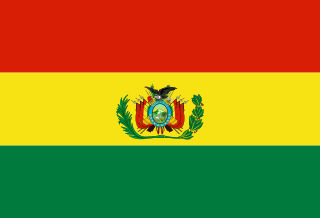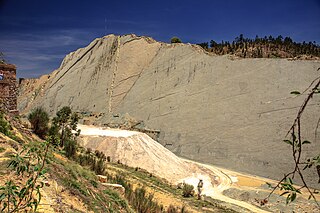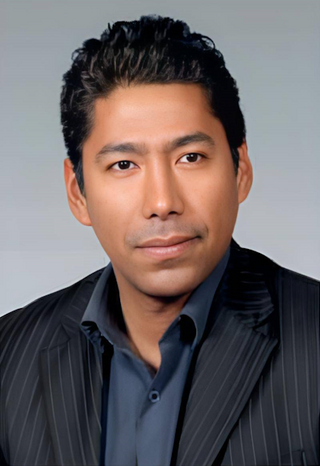
Bolivia, officially the Plurinational State of Bolivia, is a landlocked country located in western-central South America. It is bordered by Brazil to the north and east, Paraguay to the southeast, Argentina to the south, Chile to the southwest, and Peru to the west. The seat of government and administrative capital is La Paz, which contains the executive, legislative, and electoral branches of government, while the constitutional capital is Sucre, the seat of the judiciary. The largest city and principal industrial center is Santa Cruz de la Sierra, located on the Llanos Orientales, a mostly flat region in the east of the country.

Sucre is the de jure capital city of Bolivia, the capital of the Chuquisaca Department and the sixth most populous city in Bolivia. Located in the south-central part of the country, Sucre lies at an elevation of 2,790 m (9,150 ft). This relatively high altitude gives the city a subtropical highland climate with cool temperatures year-round.

The Bolivian Armed Forces are the military of Bolivia. The Armed Forces of Bolivia are responsible for the defence, both of external and internal, of Bolivia and they are constituted by Bolivian Army, the Bolivian Air Force and the Bolivian Navy. All these institutions depend on the Ministry of Defence of this country.

Chuquisaca is a department of Bolivia located in the center south. It borders on the departments of Cochabamba, Tarija, Potosí, and Santa Cruz. The departmental capital is Sucre, which is also the constitutional capital of Bolivia.

Oropeza is a province in the Chuquisaca Department, Bolivia. Its seat is Sucre which is also the constitutional capital of Bolivia and the capital of the Chuquisaca Department.

The following outline is provided as an overview of and topical guide to Bolivia:

Boliviana de Aviación, legally incorporated as Empresa Pública Nacional Estratégica Boliviana de Aviación and commonly known as BoA, is the flag carrier airline of Bolivia and is wholly owned by the country's government. Founded in October 2007 and headquartered in Cochabamba, it operates most of its domestic network out of its primary hub at Jorge Wilstermann International Airport and maintains focus cities at El Alto International Airport and Viru Viru International Airport. Almost all international flights, including long-haul services to Madrid and Miami, operate out of Viru Viru airport in Santa Cruz de la Sierra due to the severe limitations of El Alto International Airport in La Paz, located over 4,000 metres (13,000 ft) above sea level.
The Chuquisaca Revolution was a popular uprising on 25 May 1809 against Ramón García de León y Pizarro, Governor-intendant of the Intendancy of Chuquisaca. The Real Audiencia of Charcas, with support from the faculty of University of Saint Francis Xavier, deposed the governor and formed a junta. The revolution is known in Bolivia as the "First Cry of Freedom", meaning the first phase in the Spanish American Wars of Independence. The level of hostility against the Spanish Crown and news from both the American Revolution and the French Revolution has made historians dispute on whether such a description is accurate. However, accounts depict it as being the first step towards liberty in Latin America against the Spanish Crown.
We Are All Chuquisaca, was an electoral alliance created for the 2010 Bolivian regional elections that were held on April 4, 2010, in Cochabamba Department, Bolivia.
The Supreme Court of Justice is the highest court of ordinary jurisdiction in Bolivia, based in Sucre. Its powers are set out in Articles 181–185 of the 2009 Constitution and the Law of the Judicial Organ. It was first seated on 2 January 2012.
Damián Condori Herrera is a Bolivian peasant leader, politician, and Governor of Chuquisaca Department since 3 May 2021. Condori served as executive secretary of the Unified Syndical Confederation of Rural Workers of Bolivia (CSUTCB), Bolivia's largest peasant union. Condori first ran for governor of Chuquisaca in 2015, finishing second and failing to qualify for a runoff under a controversial electoral court ruling. He is the co-founder of We Are All Bolivia, a party founded on 21 April 2016, by dissident former members of the Movement for Socialism–Political Instrument for the Sovereignty of the Peoples (MAS-IPSP). He was spent two years in pre-trial detention as part of the investigation into the Indigenous Fund corruption scandal from 2015 to 2017. In the 2021 election for governor, Condori won a plurality in the first round and defeated MAS-IPSP candidate Juan Carlos León in the runoff.
We Are All Bolivia is a national political party in Bolivia that intends to contest the 2019 national and 2020 regional elections. The party was founded in Sucre in April 2016, by Damián Condori, Román Loayza, Rebeca Delgado, Luis Alfaro, and Félix Santos, all of whom are dissident former members of the governing Movement for Socialism. Condori had been a candidate for governor of Chuquisaca Department in 2015 on the We Are All Chuquisaca ballot line, but the parties that formed that line are not affiliated with We Are All Bolivia.
Events in the year 1828 in Bolivia.

Yesenia Yarhui Albino is a Bolivian lawyer, politician, and former student leader who served as a party-list member of the Chamber of Deputies from Chuquisaca from 2015 to 2020. An activist forged in the student movement, Yarhui entered politics in 2014 as a candidate on the Christian Democratic Party ballot. Elected in that year's general elections, Yarhui was just 19 years old upon her entry into the Chamber of Deputies, making her the youngest parliamentarian in Bolivian history.

Carlos Aparicio Vedia is a Bolivian diplomat, lawyer, and politician serving as ambassador of Bolivia to Peru since 2021. Aparicio studied law at the University of San Francisco Xavier, during which time he became an adherent of Trotskyist political theory, leading him to join the emerging Movement for Socialism. He served as president of the party's departmental youth wing and participated in its successful 2005 general election campaign. In 2006, he obtained his first elective position, serving as a member of the Constituent Assembly from Chuquisaca, representing circumscription 5 from 2006 to 2007. Two years later, he was elected to represent the same constituency in the Chamber of Deputies, where he served from 2010 to 2015. Following the conclusion of his term, he served as vice minister of public security from 2015 to 2017 and ambassador to Italy from 2018 to 2019.
The following is a chronology of notable events from the year 2023 in Bolivia.

René Vidal León was a Bolivian politician and trade unionist who served as a party-list member of the Chamber of Deputies from Chuquisaca from 2010 until his death in 2012. He previously served on the Sucre Municipal Council from 2000 to 2004.













